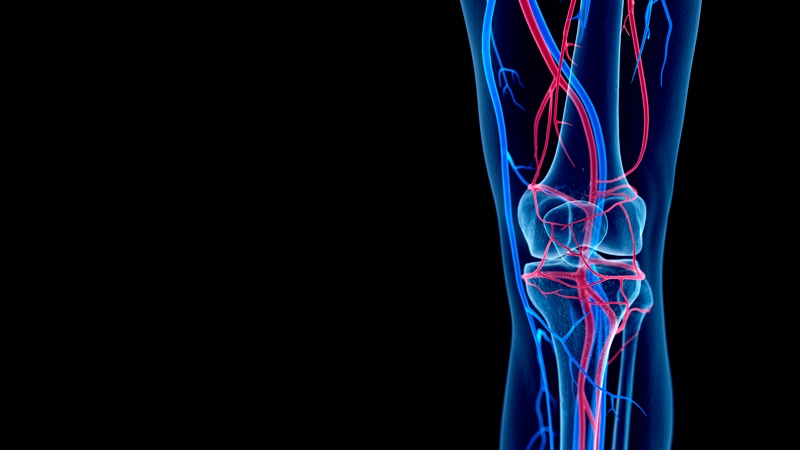Varicose veins are swollen and enlarged veins that usually occur on the legs and feet. They may be blue or dark purple and are often lumpy, bulging or twisted in appearance.
Symptoms of Varicose Veins
- Visibly distended veins.
- Large veins that you can see just under the surface of your skin.
- There may be aching or tiredness, a feeling of fullness in the limbs.
- The skin may have a tense or burning sensation. Muscle cramps may occur, especially at night.
- Hemorrhage under the skin may cause the skin to discolor (light brown to bluish).
- Veins may be abnormally large, bulging, and lumpy looking.
- Dry, itchy and thin skin over the affected vein.
- Discoloured skin in the area around the varicose vein.
Types of varicose veins
There are several types of varicose veins, they include:
- Reticular varicose veins – these are red and are sometimes grouped close together in a network.
- Trunk varicose veins – these usually look long unpleasant and long. They are near to the surface of the skin and are thick and knobbly.
- Telangiectasia varicose veins – these are also known as thread veins or spider veins, these are small clusters of blue or red veins that sometimes appear on your face or legs.
Causes of Varicose Veins
Main Cause
The leaching of calcium out of the body causes varicose veins (and other conditions such as cramps, Charlie horses, loss of teeth, and nervous upsets).
Sub-causes
- The valves of the veins no longer function properly. They become stretched from excess pressure.
- The deep veins are surrounded by muscles which keep them in shape. But those close to the surface (sousaphones veins) are ones which develop these problems.
- Contraceptive medications can induce varicose veins, as well as hormonal distillation just prior to menstruation.
- They can occur during pregnancy (especially during the first 3 months). These will usually disappear after childbirth.
- Straining at the stool, because of the lack of dietary fiber, causes constipation and can result in varicose veins, diverticulitis, hemorrhoids, phlebitis, and hiatus hernia.
Conventional Treatment for Varicose Veins
In the early stages: – using compression stockings, taking regular exercise and elevating the affected area when resting.
If there is little success from the early stages or if your condition is more severe, such as, blood clots, pain, or skin ulcers (sores) your doctor may recommend one or more medical treatment options which may include:
- Endothermal ablation – where heat is used to seal affected veins.
- Sclerotherapy – this uses special foam to close the veins.
- Ligation and stripping – the affected veins are surgically removed.
Natural Remedies for Varicose Veins
- Chondrus crispus (Irish/Sea moss) – effective for varicose veins due to the mineral content, especially calcium, silica and magnesium. Make sea moss shakes, teas, porridges etc. It can also be taken in capsule form.
- Red Oak Bark – use the decoction as a wash, and bathe the area 3-4 times daily (dilute for open sores); also a fomentation may be wrapped around the affected part and covered well with a flannel.
- White Oak Bark – make a strong white oak bark tea. Then soak stockings of white cotton in this concentrated tea and wear them, covering them with plastic, all night. Also paint the legs with the concentrate, if stockings are not available.
- Tormentil – apply the decoction as a fomentation, wrap with a plastic bandage; when nearly dry, renew the application. Also, drink the decoction internally.
- Horsetail – make teas and have at least 3 times daily.
- Get regular moderate exercise (walk daily to increase circulation).
- Change positions frequently, and never cross your legs.
- Sit with feet elevated.
- Lie on a slant board with your feet higher than your head for 15 minutes a day, especially if you stand on your feet a lot.
- If you have to lie in bed for a time, move your legs to increase circulation.
- Daily deep breathing exercises help with circulation.
- Walking barefoot improves venous blood flow.
- Do not wear bands on the legs.
- Do not wear anything tight about the waist.
- Do not squat, except momentarily.
- Do not eat fried, salty, processed foods; dairy products; or hydrogenated vegetable oils.
- Do not eat meat.
- Do not cross your legs and void dangling the feet (prevent problems with blood flow).
- Do not sit more than an hour at a time, without getting up and walking around.
- Sugars, pastries, soft and alcoholic beverages, breads, candies, etc., leach the calcium out of the body.
Dos and Don’ts
What to do
What to avoid
Risk Factors
Females, Pregnant women, Having a job that requires long periods of standing, Overweight/Obesity, Being older, Family history, Lack of movement, and Leg trauma.
Reference(s)
Natural Remedies Encyclopedia
Advanced Treatise in Herpetology by Dr Edward Shook
https://www.nhs.uk/
https://herballegacy.com/
This article is copyrighted by Ital is Vital, 2025. Want to re-post this article? Visit our guidelines.
DISCLAIMER: THIS WEBSITE DOES NOT PROVIDE MEDICAL ADVICE
The information, including but not limited to, text, graphics, images and other material contained on this website are for informational purposes only. The purpose of this website is to promote broad consumer understanding and knowledge of various health topics. It is not intended to be a substitute for professional medical advice, diagnosis or treatment. Always seek the advice of your physician or other qualified health care provider with any questions you may have regarding a medical condition or treatment and before undertaking a new health care regimen, and never disregard professional medical advice or delay in seeking it because of something you have read on this website.
